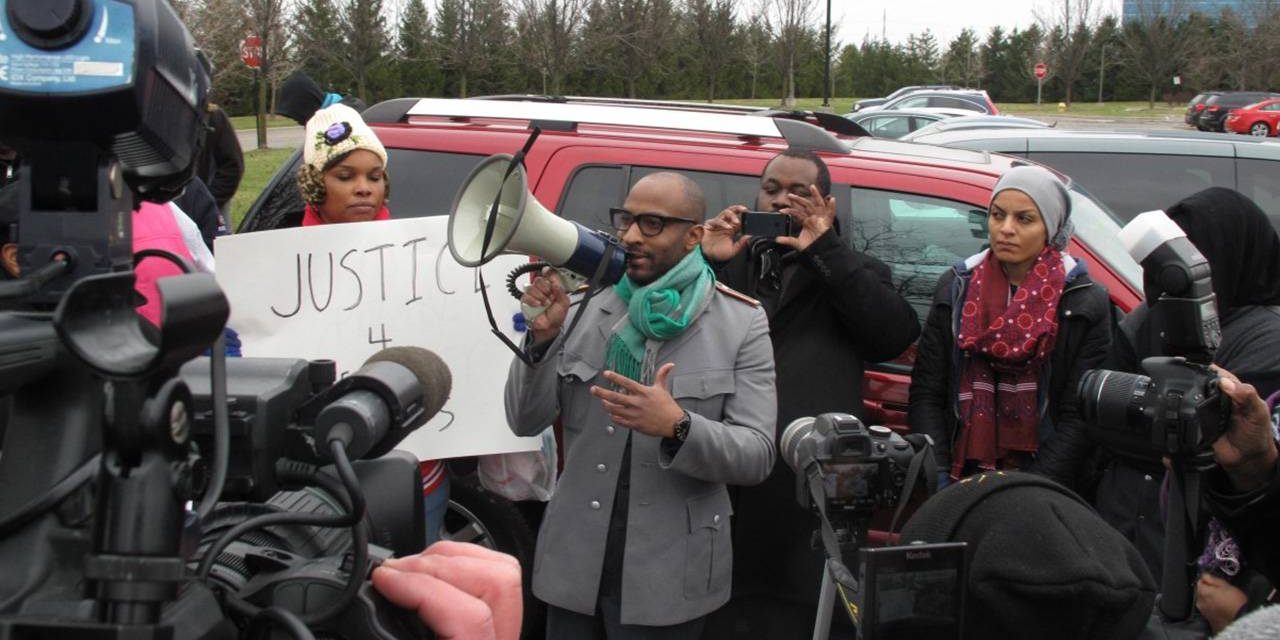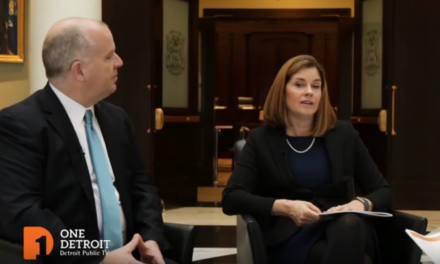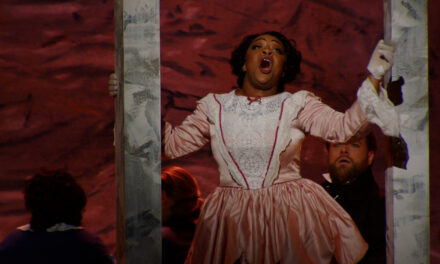The setup couldn’t have been more telling.
Reporters from the Detroit Journalism Cooperative (DJC) were lined up on one side of the room. Twenty feet away, Ford Foundation grantees representing citizen advocates, community organizers, and civic leaders from neighborhoods across Detroit, gazed back. A grouping of conference tables between us defined the vast expanse. One DJC colleague likened it to the “Dayton Accords.”
For the first 20 minutes, we talked past each other. The Ford grantees listed off the stories we should do, while the cooperative members defensively attempted to crosscheck that list with a string of stories we had already produced. They surfaced an issue; we checked the box. The back and forth continued until one particularly awkward exchange opened our collective eyes; we were not there to peddle our wares but to listen.
Sarida Scott, executive director for the Community Development Advocates of Detroit, dissected our work with one recent and infamous example. “It’s great that you do a story about the ‘Walking Man,’” Sarida said, referring to a feature piece that caused a minor national media sensation about James Robertson. The story followed Robertson, a black Detroiter, as he walked 20 miles to and from work because of inadequate public transit just as he has done each day for the past 10 years. “But it doesn’t explain the system that causes him and others to walk in the first place,” Sarida continued. To her point, Robertson, through a momentary outpouring of generosity, received enough contributions to buy his own car, move into a suburban Detroit apartment with a 52-inch television and put money in an investment portfolio. But what of the hundreds if not thousands of other walking Detroiters? Where’s their national spotlight? Their new car? Since that moment, the way we produce journalism at the Detroit Journalism Cooperative – already a unique storytelling experiment – changed.
In February 2016, the Detroit Journalism Cooperative launched The Intersection with funding and support from Knight Foundation, the Corporation for Public Broadcasting and Renaissance Journalism, a project of the Ford Foundation. A multimedia collaborative project, The Intersection attempted to tackle one topic – in this case the roots of the 1967 uprising and its effects today – from the perspective of five different media outlets. This collaboration of print, radio, television and web-based media transcends conventional methods of a single medium. The different media platforms, which include a range of ethnic community voices, can promote a multiplicity of perspectives and experiences while connecting to a newly networked audience. The cross-pollination of ideas and viewpoints span the traditional gambit of how people relate to our stories. Yet with all these innovative approaches to explaining where our community has been, where it is and where it is going, we lacked only one ingredient: our audience.
On the heels of the Ford grantees’ meeting, the DJC began working on Chapter 3 of The Intersection focusing on poverty. Based on Sarida’s suggestion, we began examining the system as a whole looking for stories to highlight one aspect of the civic, economic and political infrastructure that perpetuates critical issues facing Detroit such as poverty. The culmination of these stories in theory would lead to an infrastructural understanding of the mechanisms of poverty and hopefully lead to new ways to attack the problem.
This leads to the beginning of our video series for the DJC that Detroit Public Television calls “Poverty: A Pathway to Prison.” Through community outreach and regular meetings with DPTV’s 45-member community advisory panel, the DJC has engaged in an audience-driven approach to examine systemic issues and identify opportunities for solutions-based storytelling. This community collaboration directly resulted in the story of Denise McNair, who broke the cycle of poverty thanks to the groundbreaking “Transition to Success” program. A national program founded in Detroit, Transition changes the way poverty is viewed by treating it as a medical and environmentally-based condition.
By engaging and listening to members of our community, the Detroit Journalism Cooperative is bringing new voices to our audience, heard for the first time with alternative views to be expressed. Our multimedia and multicultural storytelling platform had given us a unique opportunity to educate and brand our organizations through content, prompting learning opportunities as well as bridging racial, religious and ethnic borders. Engaging with others working in the community forced us to look at issues in a broader way, rather than the easy “one-off” approach of traditional media. An unexpected side benefit: stories of hope against long-standing, difficult urban problems. And it all started when we relearned the most important aspect of our jobs: listening.
For more information on the project, visit detroitjournalism.org.





